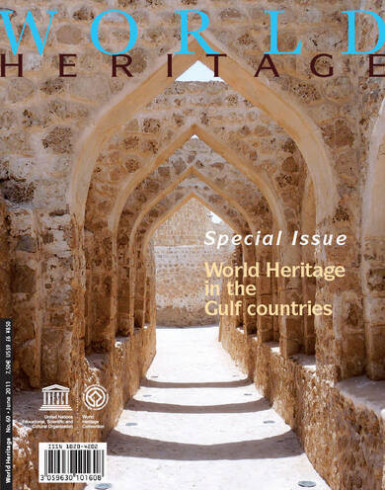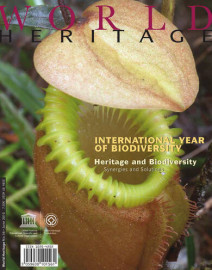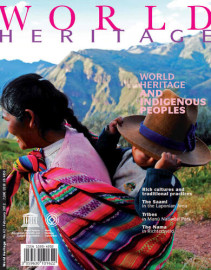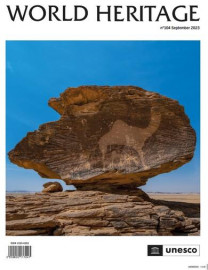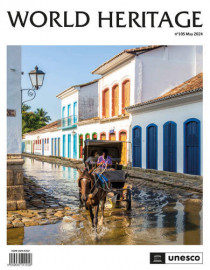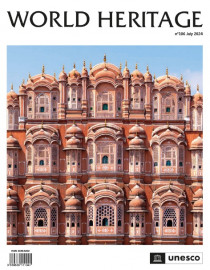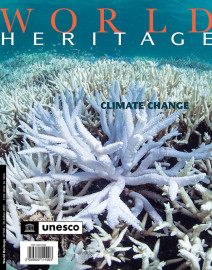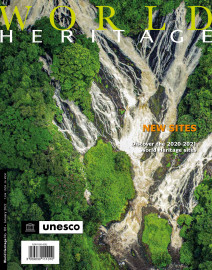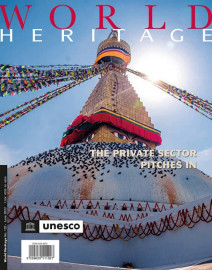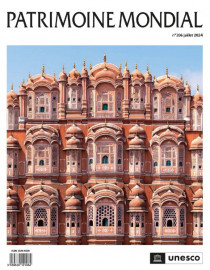DL Services SPRL
Rue Vanderborght 24
1081 Brussels Belgium
info@dl-servi.com
World Heritage Review 60: World Heritage in the Gulf Region
Available
This special issue is devoted entirely to World Heritage sites belonging to members of the Cooperation Council for the Arab States of the Gulf. It thus offers a unique opportunity to discover the rich cultural and natural heritage of a region that embraces Bahrain, Oman and Saudi Arabia (all three of which already have sites inscribed on the World Heritage List), as well as Qatar and the United Arab Emirates, both of which will be submitting sites for inscription at upcoming Committee meetings.
The current development of World Heritage activities in the Gulf region is a cause for great satisfaction – all the more so in that all the countries concerned have been significant players at various stages of history, both in international trade and in the transmission of cultural contents and skills. Four of the six member countries of the Council have been, or are currently, members of the World Heritage Committee: Bahrain, Kuwait, Oman and United Arab Emirates. Bahrain has been instrumental in its support of the World Heritage Convention in the region, among other activities establishing an Arab Regional Centre for World Heritage as a Category II centre under the auspices of UNESCO. Shaikha Mai Bint Mohammad Al-Khalifa, as Chairperson of the World Heritage Committee throughout the last twelve months, has played a remarkable role in implementing the World Heritage Convention in the region and in general.
Génération de facture pro forma disponible dans le panier.
The articles in this issue deal with all the sites and countries in the Gulf region. One is thus devoted to the site of Qal’at al-Bahrain (Bahrain Fort), a tell capped with a fort last developed by the Portuguese, not far from the kingdom’s capital where archaeological research has uncovered vestiges of a civilization contemporary to the Sumerian.
Exceptionally arid climate conditions have favoured the development in the region of a unique system of water management, the falaj (plural, aflaj) consisting of tall subterranean galleries dug to convey spring water, sometimes over long distances, to sites in need of irrigation. Aflaj are found throughout the Middle East, but they have been somewhat neglected over recent decades, and we should hail the initiative of Oman, which has listed a number of exemplary aflaj found on its territory.
Three more important sites in Oman have been inscribed on the World Heritage List: Bahla Fort, the protohistoric site of Bat (the world’s most complete collection of settlements and necropolises from the third millennium BC) and the Frankincense Trail. And finally in Saudi Arabia in 2008, the remarkable Nabataean city of Al-Hijr (formerly known as Hegra, a sister site to Jordan’s Petra) was inscribed on the World Heritage List, as was ad- Dir’iyah, the striking 15th-century capital of the Saudi dynasty, in 2010. All these inscriptions and others currently in the pipeline attest to the intent of these countries to track, acknowledge and assert their historic presence and ongoing influence within the planetary fabric of culture, trade and development that the World Heritage process set out to inventory and celebrate nearly forty years ago.



